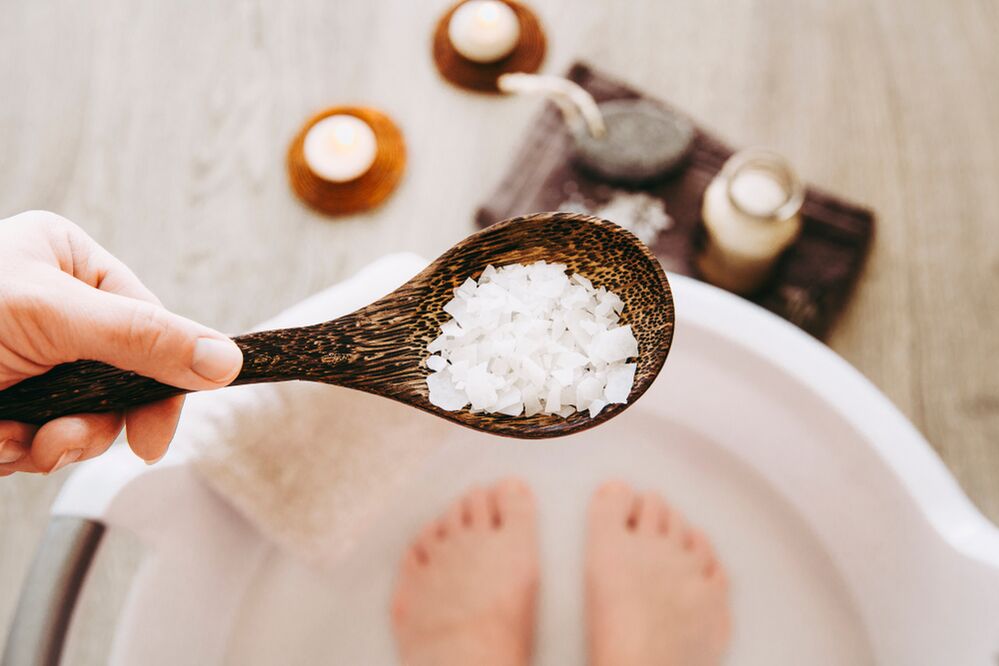
Nail fungus is a disease that many people suffer from. This disease is easy to spot, but curing toenail fungus is much more difficult. Many patients use folk remedies to get rid of the fungus. In many cases, the treatment of nail fungus is cheaper and more effective than with conventional medicine.
What is nail fungus
Nail fungus (onychomycosis) is caused by an infection of the nail plate with pathogenic fungi. Fungi are the smallest microorganisms that feed on proteins contained in the tissues of the nail. Most fungi that live on human nails belong to the genus Trichophyton, although onychomycosis can also be caused by fungi in the genera Epidermophyton, Microsporum, and Candida.
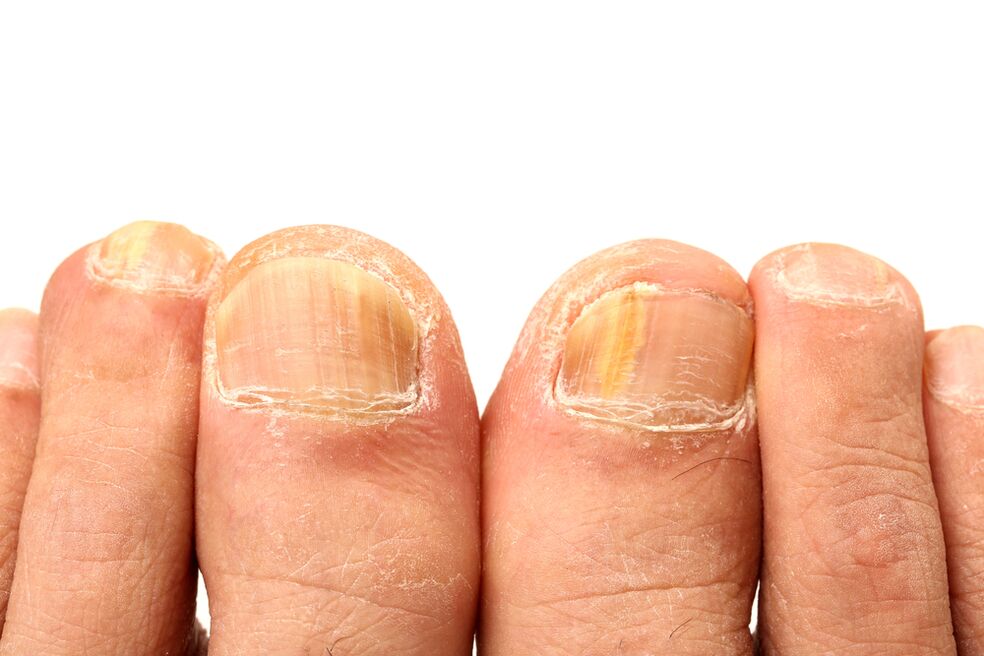
Onychomycosis is a contagious disease. Fungi can get on nails through contact with objects that contain fungal spores. It can be the floor in saunas, baths, swimming pools, locker rooms, manicure tools, shoes, socks. However, active reproduction of the fungus occurs only with a severely weakened immunity or with problems with the health of the circulatory system, the endocrine system. Also provoke the disease:
- excessive sweating of the legs;
- nail injuries;
- disregard of hygiene rules;
- Taking drugs that reduce immunity - immunosuppressants, corticosteroids;
- overweight;
- uncomfortable or old shoes.
The main symptoms of onychomycosis:
- itching, burning;
- deformation, thickening or thinning of the nail;
- change in nail color (brown, brown, yellow, or dark);
- stratification, crumbling of the nail;
- bad smell.
Ignoring nail fungus can lead to nail plate loss and suppuration. The fungus can also get to the surface of the skin and even extend beyond the legs. There is a risk of infecting other people, especially relatives of the patient.
How to cure nail fungus?
Many methods have been developed to treat nail fungus. Most of them involve applying antifungal drugs to the nail surface. When the nail is fully invaded by the fungus, the nail is surgically removed. However, not everyone is satisfied with traditional methods. There can be many reasons for this - the high price of pharmacy drugs, their inaccessibility (for example, if a person lives in a rural area), low efficiency, distrust of traditional medicine, allergy to drugs.
Treatment of fungi with folk remedies: the most effective ways
Therefore, people looking for a cure for onychomycosis often turn to folk remedies for help. These methods do not have a strictly scientifically proven effectiveness. But in practice, nail fungus therapy with folk remedies helps many, especially if the disease is at an early stage, that is, one or two plaques are affected and the skin is not yet affected. At the same time, the treatment of nails with folk remedies does not exclude the parallel use of traditional pharmaceutical drugs. In this case, the effect of the latter can be significantly enhanced. As a rule, it is not worth waiting for quick results of treatment, getting rid of the fungus with folk remedies often takes 2-3 months.
Antiseptics are the most commonly used home remedies. These are boric acid, iodine, brilliant green, potassium permanganate, soda ash, hydrogen peroxide, boric acid, chlorhexidine, ammonia. These drugs, strictly speaking, cannot be attributed to the people, since they are widely used in traditional medicine. However, physicians do not usually prescribe them as first-line drugs for patients with onychomycosis. But this does not mean that antiseptics do not affect the fungus on the legs. However, their effectiveness is most often manifested in the initial stages of the disease.
Anti-inflammatory and antiseptic agents based on herbs (St. John's wort, celandine, herbal preparations) can be attributed to folk remedies. These treatments and prescriptions are also the most recommended supplements by doctors.
Treatment with folk remedies also includes the use of:
- essential oils from plants;
- birch tar;
- kombucha;
- propolis;
- garlic, onion;
- Vinegar;
- ground coffee;
- household and tar soap;
- lemon juice.
Most often, foot baths, lotions, compresses and ointments are used to treat onychomycosis with folk remedies. Sometimes products can be smeared directly onto the nail surface. The duration of some procedures is only a few minutes, while in other cases it is necessary to keep therapeutic compounds on the nails for hours. In this case, the procedure is best done at night.

Warm baths with medicinal solutions are most often taken 1-2 times a day. The duration of the procedure is 15-20 minutes. The water should be warm but not hot. If the water has cooled before the process is complete, you need to add some hot water to the container.
Before applying medication to the surface of the nail, it is recommended to steam the legs. For this reason, in the treatment of onychomycosis, it is preferable to use baths, since the surface of the nail becomes softer and the therapeutic compounds penetrate better into deep tissues. In addition, medicinal substances can also penetrate under the nail bed when using baths, and only the upper side of the plate can be affected in the case of compresses and lotions. Meanwhile, parasitic fungi often live underneath.
It is necessary to periodically trim the loose and deformed part of the nail affected by the fungus. For the treatment of healthy and diseased nail plates, it is best to use different manicure tools to avoid infection transmission. A regular change of socks is required during the treatment period, as increased sweating contributes to the development of the fungus. Situations that encourage re-infection should be avoided - visits to swimming pools, gyms, baths, etc.
All plant-based ingredients must first be tested for allergenicity.
potassium permanganate
Potassium permanganate solution is a powerful universal antiseptic that is widely used at home. It is also active against pathogenic fungi. You can use both baths and lotions. To prepare the bath, you need to take 500 ml of vinegar and 10 g of potassium permanganate per 10 liters of water. The duration of the procedure is 20 minutes.
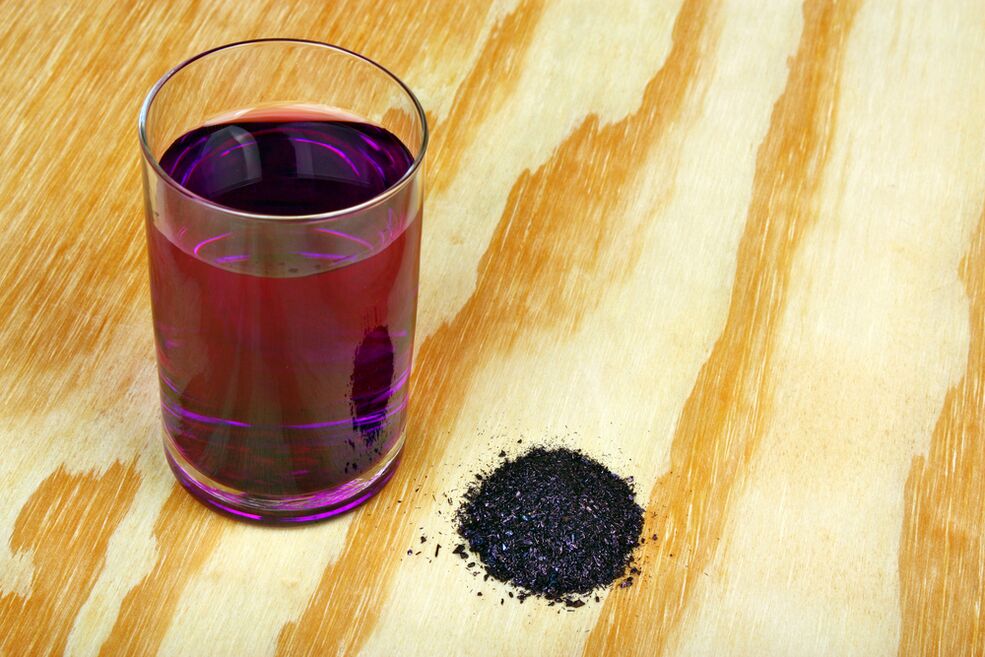
vinegar treatment
Pathogenic fungi do not tolerate an acidic environment - it is on this property that the treatment of mycosis with vinegar is based. It is best to use 9% vinegar. Vinegar can be added to foot baths. You can also make lotions with vinegar and rub them in. To prepare a bath with vinegar, it is necessary to pour enough water into a basin to reach the ankles, and then add 200 ml of vinegar. The water temperature should be +50 °C. The duration of the procedure is 15 minutes, it must be carried out every other day.
Another recipe calls for adding chicken eggs to the vinegar. 200 ml of vinegar is dissolved in 5 liters of water and then 2 raw eggs are added there. The mixture is whipped. With this footbath you have to take effect for 20 minutes. The duration of treatment is 1-2 weeks.
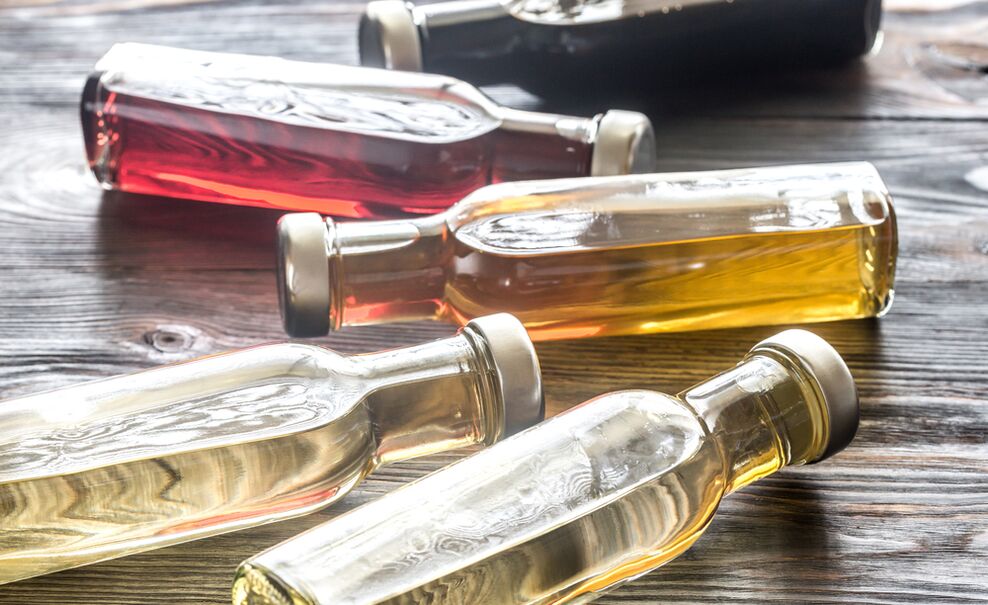
For lotions, cotton pads are taken, previously soaked in vinegar and also applied to the nails for 15 minutes.
Care should be taken when treating with vinegar as it is an aggressive substance. Vinegar therapy should not be performed on damaged skin.
celandine treatment
Celandine is a plant that has long been used to treat problem skin. It can also help with onychomycosis. However, celandine contains toxic substances, so it should be used with caution.
It is best to use fresh celandine juice obtained from a crushed and pressed plant. This juice is applied to the nail twice a day. The duration of treatment is three months.
You can also prepare a decoction of celandine. For this 5 tbsp. l. herbs, pour 1. 5 liters of boiling water. The mixture is heated on fire for 10 minutes, and then filtered. The brew can be used for foot baths. They must be taken within 15 minutes. The procedure is carried out 2 times a day.
To prepare a tincture of celandine, you need to take alcohol and celandine juice in equal proportions. The liquid is infused during the day. Tincture of celandine lubricates the affected nails.
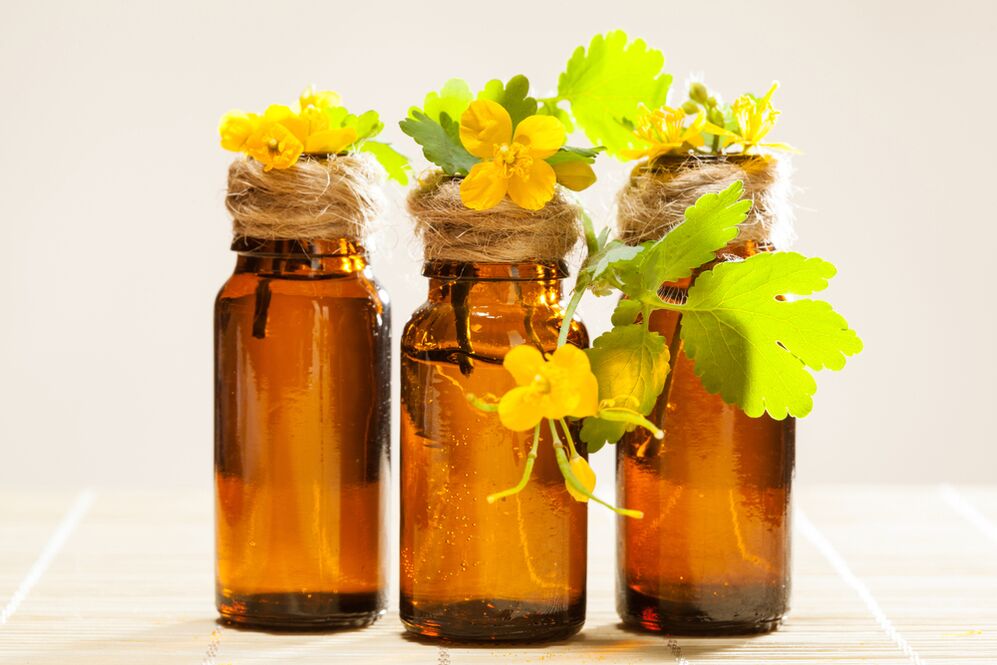
You can also prepare an ointment from celandine. For this 2 tbsp. Butter is mixed with chopped celandine. The ointment is rubbed into the nails 2-3 times a day for 10-14 days.
garlic treatment
Garlic contains natural substances that kill harmful microorganisms. Therefore, garlic is also used to treat onychomycosis.
For treatment, you can use garlic juice or crushed garlic. For example, it is recommended to dilute garlic juice in alcohol and water (in a 1: 1: 1 ratio). With this solution you can lubricate your nails every day.
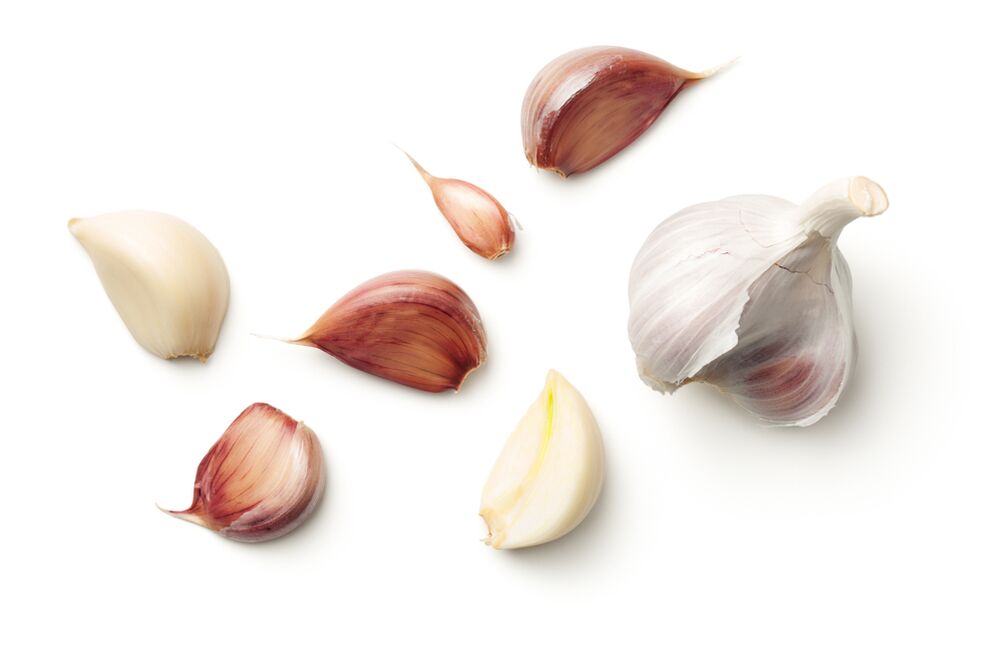
Essential Oils
In the treatment of onychomycosis, oils of lavender, ylang-ylang, lemon, fir and rosemary are used. The most popular is tea tree oil. Essential oils can be used in therapeutic baths. For a bath with a volume of 3 liters (temperature +45 °C) you only need 10 drops of oil. The duration of the procedure is 20 minutes. After its completion, the feet are wrapped in a dry towel. The duration of treatment is 2 weeks.
Another version of the tea tree oil bath also involves the use of salt. For 1 liter of water, 1. 5 tablespoons are taken. salt and 1 tsp. oils. The procedure should be completed within 15 minutes.
You can also do compresses with essential oils. In addition in 2 tsp. Water will dissolve a few drops of heated oil. Cotton wool soaked in the solution is applied to the nail. You need to keep it for about an hour.
The easiest way to treat onychomycosis with essential oils is to periodically wipe the surface of the nail plates with cotton swabs dipped in oil. This procedure must be continued for 2-3 weeks.
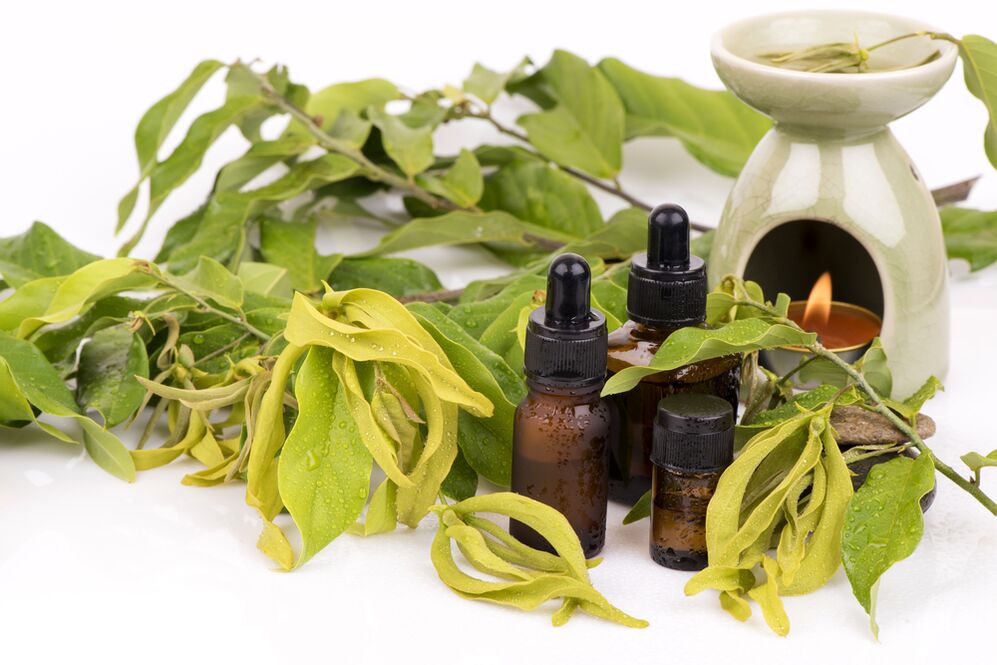
propolis
Propolis is a by-product of beekeeping that has long been used in folk medicine. There are also recipes for onychomycosis with propolis. For example, tampons soaked in an alcohol tincture of propolis can be applied to nails with a fungus. To prepare the tincture, you need to infuse 30 g of propolis in 500 ml of vodka for 2 weeks. This tampon should be worn throughout the day.
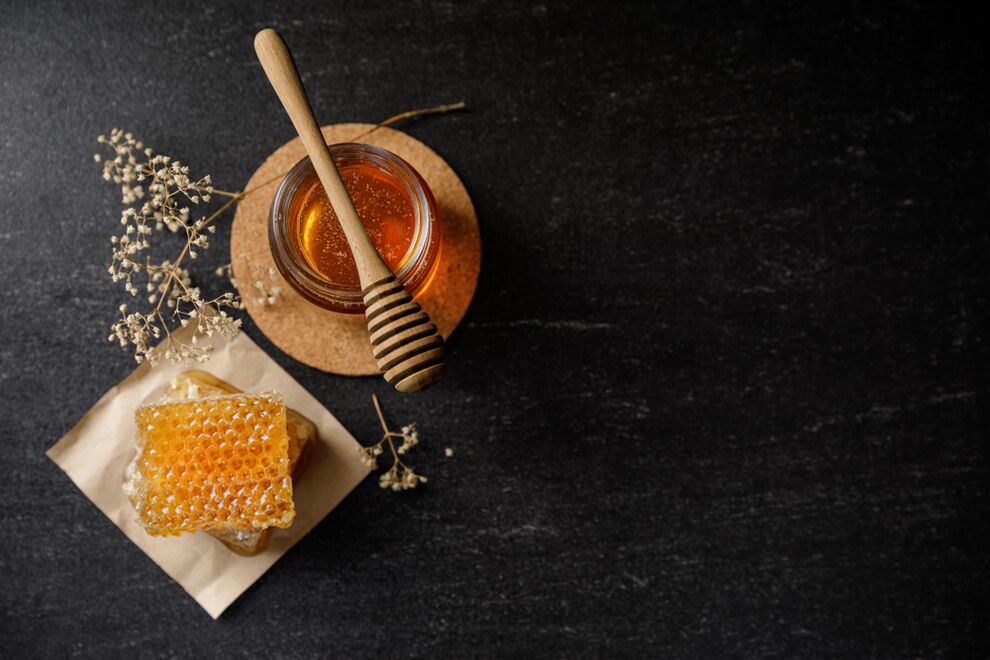
You can also make baths with propolis. Just 15 drops of tincture in 3 liters of water is enough. The duration of the procedure is 15 minutes. You can also apply pure propolis to the nails. This process shouldn't take longer than 15 minutes either.
salt and soda
Sea and table salt, as well as soda, are included in many recipes for onychomycosis. They are often added to foot baths. Salt baths can be made as follows: a tablespoon of salt is dissolved in 2-3 liters of water. You also need to add a tablespoon of baking soda. The process is carried out within 15 minutes. It is advisable to combine it with the use of antifungal ointments.
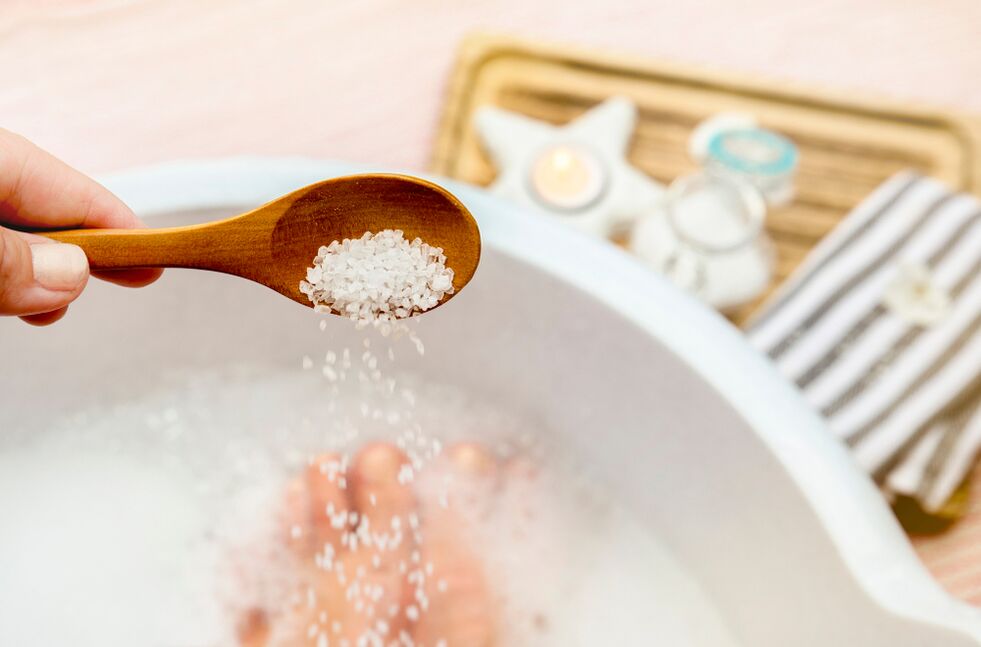
You can use another recipe for baths - 100 g of salt and 4 tablespoons are taken for 4 liters of water. Vinegar. To enhance the effect after salt baths, it is recommended to treat the nails with iodine.
iodine
An alcoholic solution of iodine is suitable for the treatment of onychomycosis. Iodine compounds have an aggressive effect on protein compounds in fungal cells and in the nail itself. As a result, fungi lose their food source. Iodine is cheap and very easy to use. The nail plates affected by the fungus must be treated with iodine daily. One drop is enough for each nail. You can also periodically lubricate the nails with a cotton swab soaked in iodine solution. Baths with iodine solution are also used. To prepare the bath, you just need to drip 10 drops of iodine solution into a container of water. The procedure should last 10-15 minutes.
Iodine can also be used to prevent fungus on healthy nails. However, regular treatment with iodine has a number of contraindications - intolerance to this substance and thyroid disease.
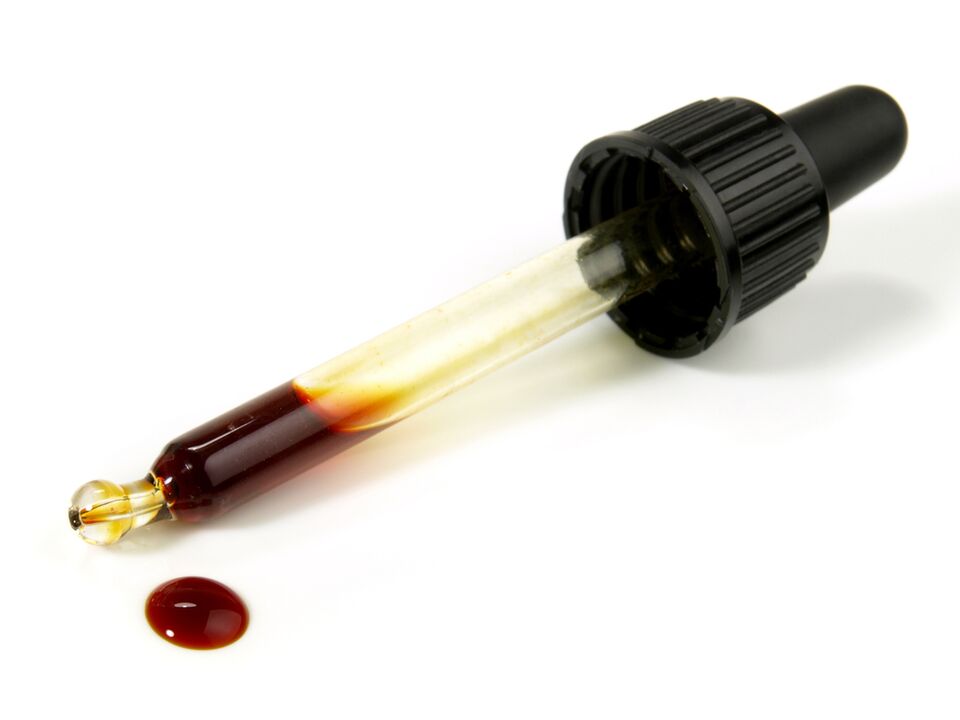
alcohol
It is used as part of the complex treatment of onychomycosis and medicinal alcohol. Most commonly, compresses are made with alcohol and applied to the affected nail. Before the procedure, the nails must be properly steamed in warm water. An alcohol compress is best done at night, and in the morning the nail is treated with an antifungal drug.
tea fungus
Kombucha is a traditional medicine used for various diseases including mycoses. The substances contained in kombucha are effective against most pathogenic fungi, with the exception of fungi of the genus Candida. Kombucha is often grown at home. For therapeutic purposes, it is best to take an infusion at the age of three months.
Traditionally, poultices containing tampons soaked in boiled kombucha concentrate are used to treat onychomycosis. This procedure should be carried out at night. You can also lubricate the nails with fungal slime.
Contraindications for using Kombucha:
- Pregnancy,
- Diabetes,
- lactation,
- Alcoholism,
- Hepatitis,
- AIDS.
hydrogen peroxide
Also, this substance has a negative effect on the fungus. The most commonly used baths with hydrogen peroxide. The procedure requires 150 ml of a 3% peroxide solution per 4 liters of water. The duration of the procedure is 25-30 minutes.
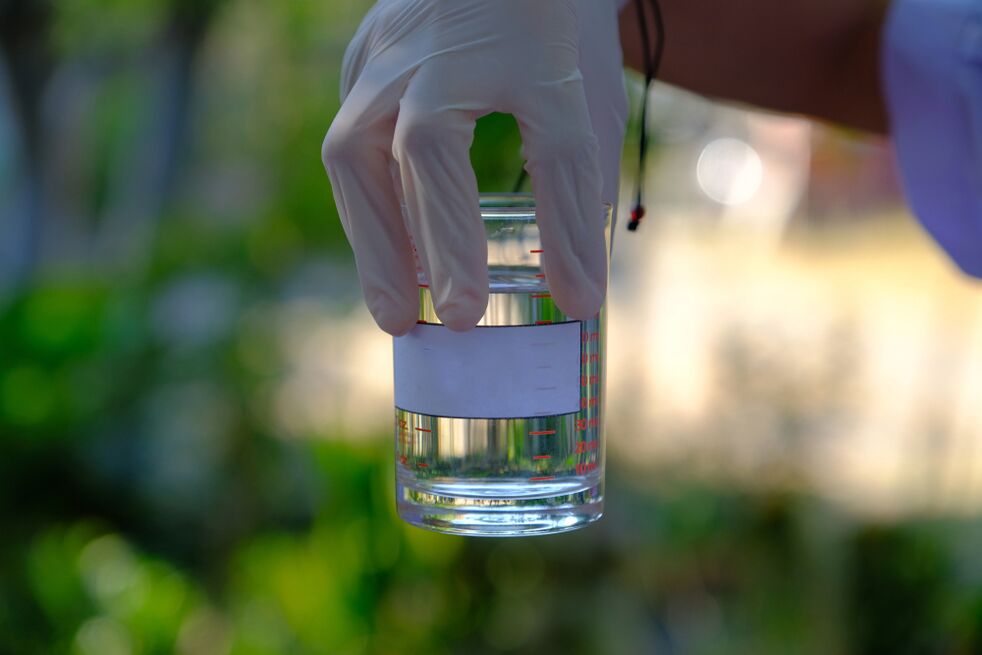
You can also perform compresses with hydrogen peroxide. To do this, it is necessary to moisten cotton swabs with peroxide and apply them to sore nails. The duration of the procedure is 1 hour. You can also mix equal parts peroxide with vinegar. Saturate a cotton swab with this mixture. Then the mixture is applied to the nails with it.
tar and tar soap
Birch tar is one of the oldest antiseptic and anti-inflammatory agents known to folk medicine. Tar can be used both in its pure form and in the form of an ointment as an addition to traditional remedies. Soap with the addition of tar is also used - tar. Before applying tar to the nails, they must be steamed. Tar is applied to dry nails. The process takes 2 hours, then the tar is washed off with warm water.
For lack of tar, you can take tar soap - a tool that can be found in every home. It can also be used against the fungus – for treatment and prevention.
First of all, you can do foot baths with soap. The maximum amount of soap must be dissolved in the bathroom. To help the soap dissolve better, you can rub it. The water temperature is warm but not boiling hot. Do the process for 20 minutes. Another recipe is also used - soap in the amount of 15 g is mixed with 30 g of baking soda. This mixture must be rubbed into the sore nails every day.
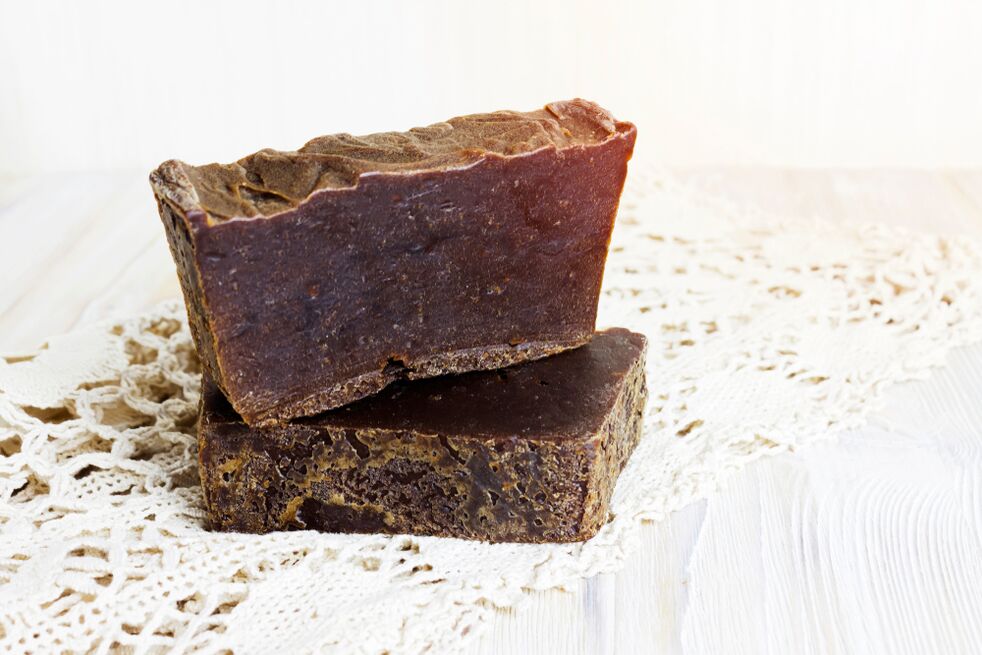
After using tar soap, the skin may become excessively dry. In this case, you can use a moisturizer. Tar and tar soap are contraindicated for people with too dry and sensitive skin.
boric acid
This popular antiseptic also helps against fungus. With a 2% solution of boric acid, the diseased nail, previously steamed in water, must be periodically wiped. However, acid should not be used if there are wounds, abrasions or bruises on the skin.
urea
The fungicidal effect of urea is related to the ability of this substance to absorb water. Since fungi need water to live, they die quickly from the effects of urea. It is best to use urea along with birch tar. Both substances are taken in equal parts and mixed. The composition is applied to the nails and kept for a day.
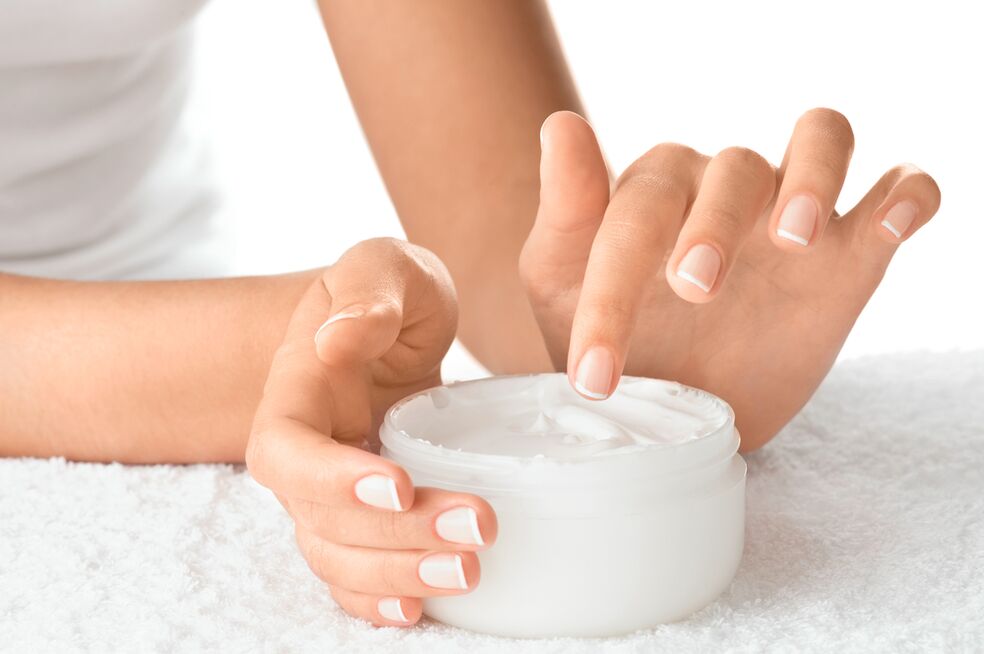
Then, after removing the affected part of the nail plate, iodine is applied to the nails for five days. If necessary, the procedure is repeated 1-2 more times.


















